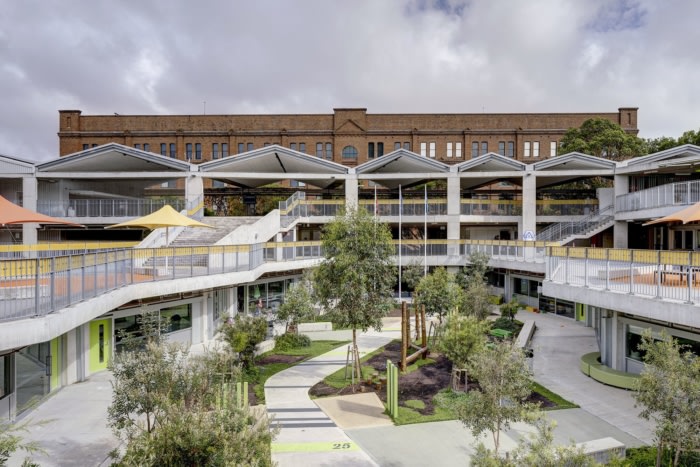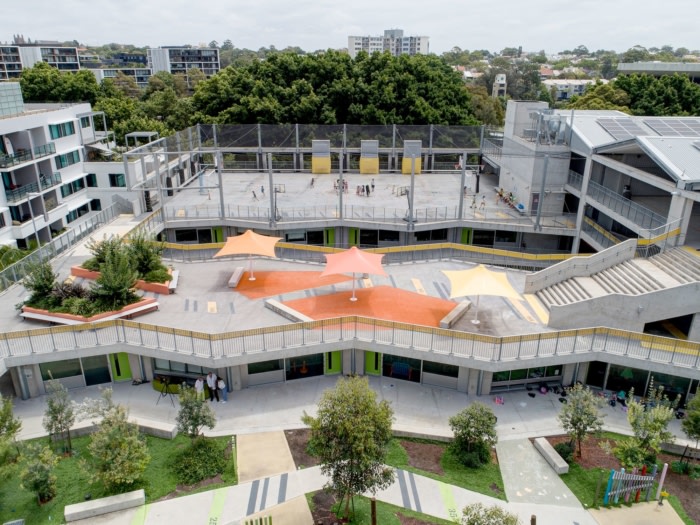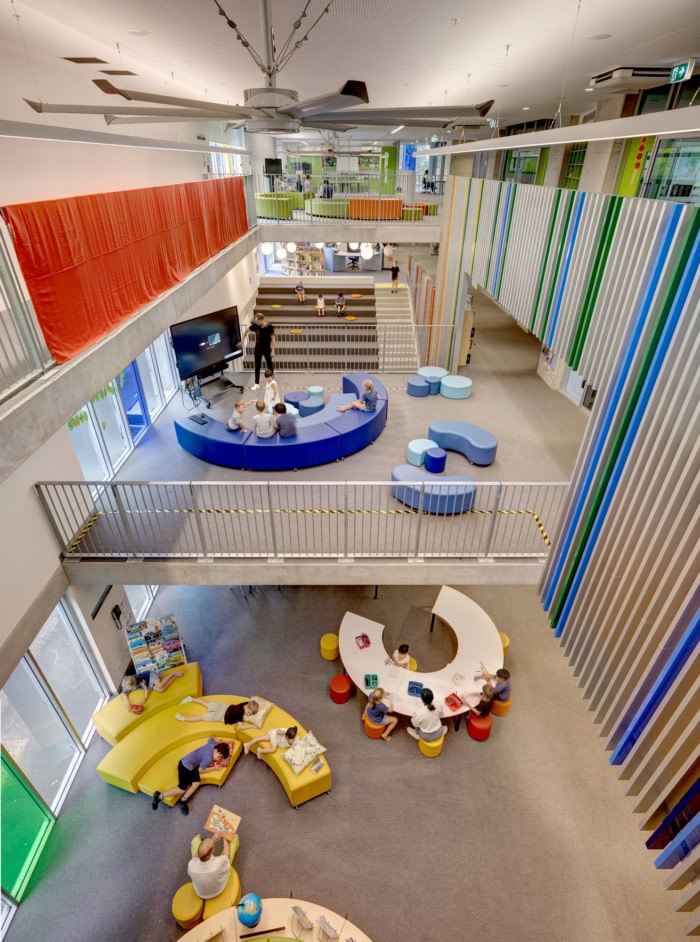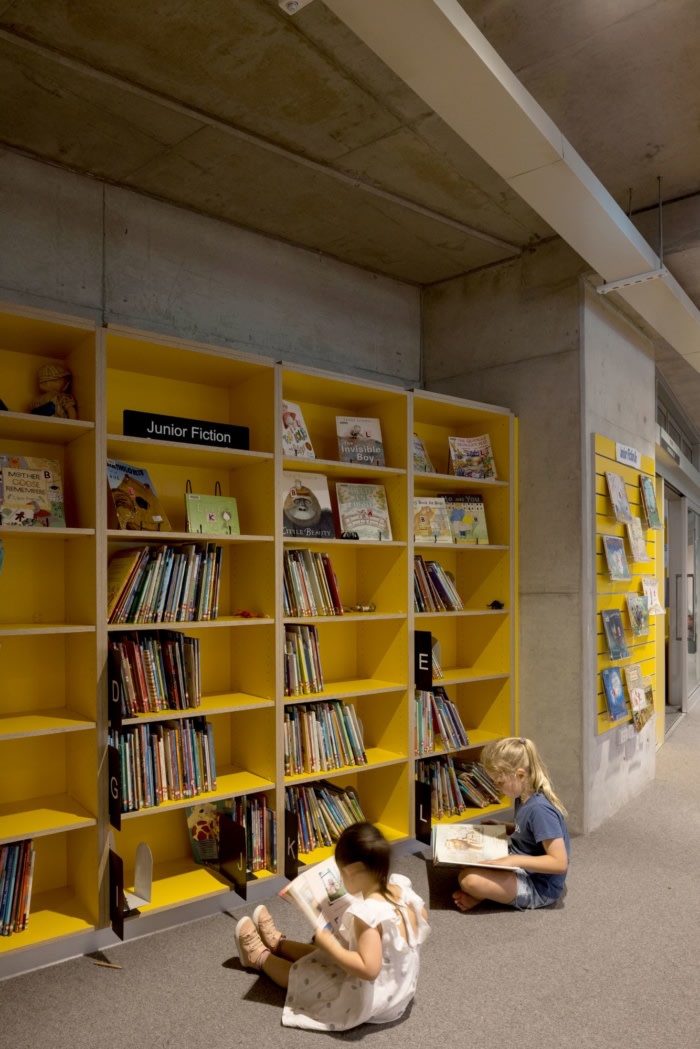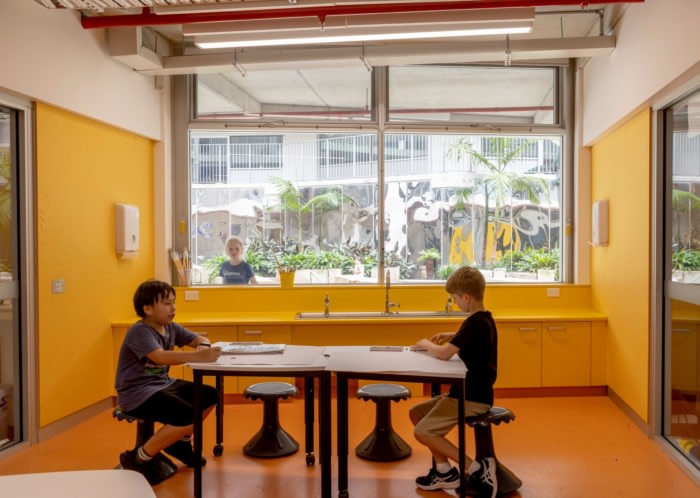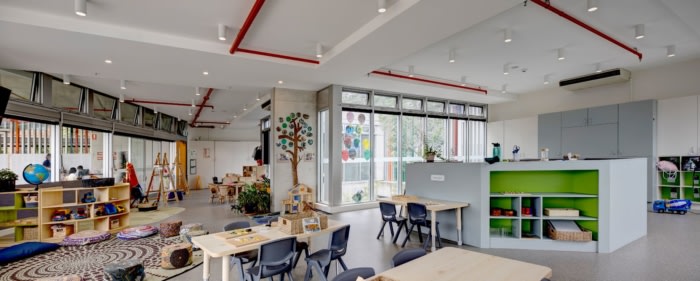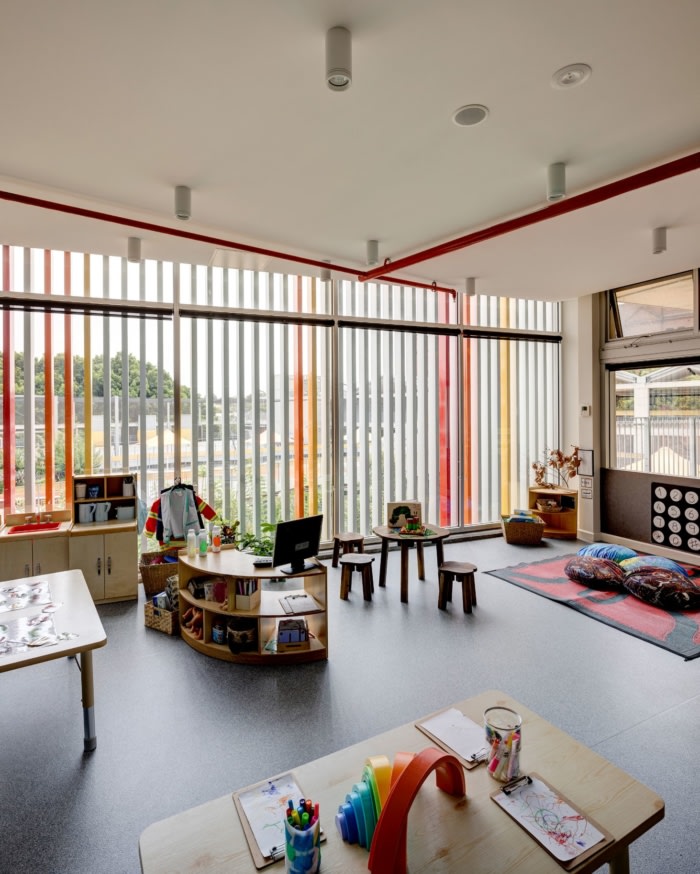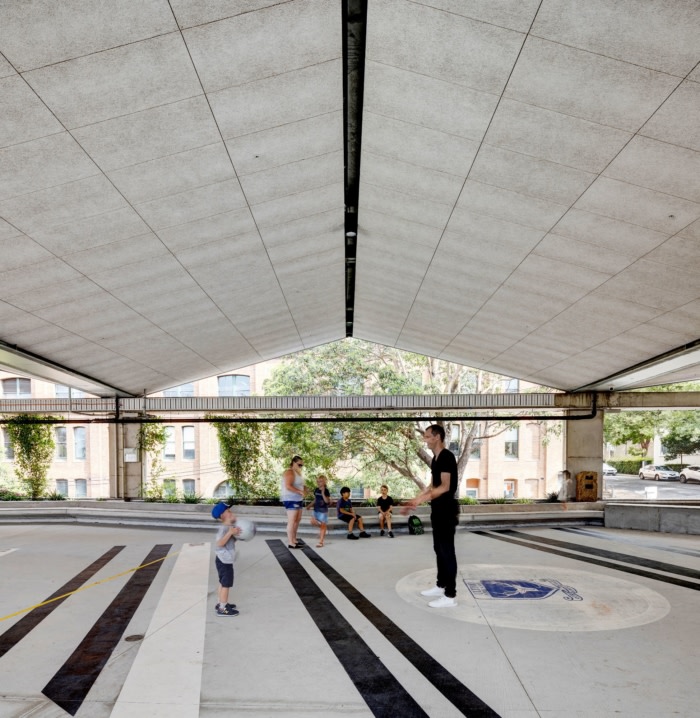Ultimo Public School
DesignInc, Lacoste + Stevenson and BMC2 worked together to design the Ultimo Public School for students in Sydney, Australia.
Ultimo Public School is a new inner Sydney primary school blurring architecture, landscape and interiors to create sanctuary, engagement and connection to support the next generation of learners.
Nestled on an inner-city site between multi-storey apartment buildings, warehouses, an arterial road and parklands, the new Ultimo Public School cleverly achieves both sanctuary and connection.
From the outset, the design team applied a deep understanding of emerging education pedagogues—such as student-based learning—to the design process. Dissolving the classroom/playground divide, flexible learning spaces expand into playgrounds, verandahs and walkways. Architecture, landscape and interior design work together to create a healthy, adaptable and enchanting learning environment to support the next generation of students.
Civic connections
One of the design challenges was responding to the varied uses adjacent to the school: apartments, warehouses, a busy road and a park. The terraced layout allows the design to fit with the scale and building typologies of neighbours on all sides. An open and modest scale along Jones Street reinforces the character of the street, the robust façade on Quarry Street responds to the brick warehouse building to the north and the Wattle Street façade screens heavy traffic.Learning to learn
Flexible learning spaces and strong connections between indoor and outdoor support a range of education styles, encouraging children and teachers to explore diverse ways of interacting. Ultimo Public School seamlessly blends imagination and nature to enrich the students’ learning journey.A layered landscape
In this dense urban setting, landscape is key to providing sanctuary and respite. A large proportion of the students live in surrounding apartments with very limited access to natural environments and play spaces. Teaching staff had observed a below average gross motor skill development in the students, so a key part of the brief was to bring the natural environment into the school.Taking advantage of the steep slope, the school is arranged as a series of terraces. To maximise useable space, all terraces and rooftops become gardens or play spaces—vegetation, equipment, environmental graphics, nature play and water features combine to enhance sensory experiences and promote engagement, relaxation and activity for the school community.
Three distinct landscaped playgrounds terrace down the centre of the site, each featuring vegetation specific to the microclimatic conditions. Abundant and layered plantings, visual connection between the three terraces and generous openings to the sky allow students a connection to nature in this highly urbanised area of the city.
A fourth playground—the COLA—on the uppermost level, provides all weather covered outdoor play and learning opportunities. Mesh screens with vines growing through them allow solar access, ventilation and views over the adjacent street, while also offering privacy and protection.
A ‘DNA linking chain’ pathway connects all four levels, operating as running track with distance markers and exercise station. It also connects outdoor learning and breakout spaces.
Sustainability
Environmentally sustainable features include reused photovoltaic cells and a displacement ventilation system, where outside air is supplied below the library floor level and is relieved at high level for chimney-effect ventilation through the three-storey library and general learning spaces. Some sustainability features have become learning opportunities for kids, such as digital displays that display energy consumption, solar power generation, water harvesting and the like.
Design: DesignInc, Lacoste + Stevenson and BMC2
Photography: Brett Boardman



